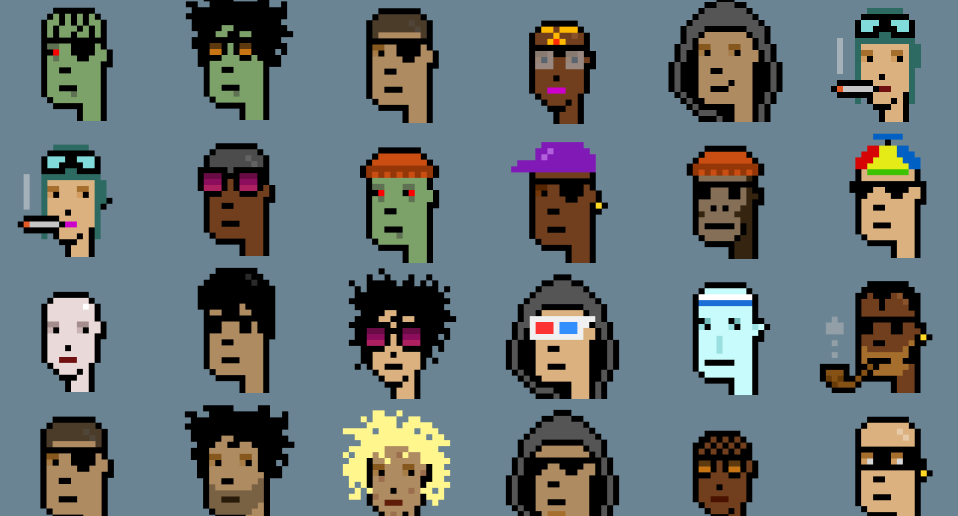Face the Music
One music NFT startup fails while another is founded, and ROBNESS gives a rundown of the early crypto art scene.

Zora, an NFT marketplace protocol created on principles of decentralization and collaboration, celebrated its first anniversary by allowing anyone to mint a free commemorative NFT for 42 hours. Called Zorbs, these colorful spheres are meant to operate as an open-source identity system for the decentralized internet (the source code is available here). Each Zorb adapted specific qualities based on the properties of the wallet holder; those features change whenever the NFT is transferred to a new address. When the minting period concluded, 56,741 Zorbs had been created.
Inc. reports that Instagram is “actively exploring” bringing crypto to their platform. The Meta-owned company—ever expanding its tools for in-app commerce and branded content—hopes to eventually allow users to buy crypto through the Instagram app, and purchase posts and other digital assets as NFTs in a new profile tab for “collectibles.” This move is likely motivated by Meta’s push to incorporate crypto into their platforms, and could potentially bring in billions more in yearly revenue. Inc. also pointed out that, if some sort of crypto exchange is eventually implemented, Instagram’s social power could further normalize decentralized currency to the general public.
Outland recently published a commentary piece by Brian L. Frye on copyright and ownership of NFTs, discussing CryptoPunks and Bored Ape Yacht Club and contrasting held by the collections’ creators, Larva Labs and YugaLabs. In the replies to Outland’s tweet linking the essay, artist and creative director Ryder Ripps called the BAYC imagery racist. It’s not the first time this criticism has been levied at the collection, but the controversy peaked this past week, thanks largely to Ripps’s agitation. (See Ripps’s interview with Know Your Meme for details on how he identifies alt-right sources of BAYC.) Contentious conversations under headings like “The BAYC Racism Debate” and “BAYC Safe Space” played out on Twitter Spaces. YugaLabs has not directly addressed the issue, but posted a Twitter thread with their own explanation of the imagery’s origins.
Perhaps Ripps’s theories took off because they resonate with the often-heard critique that crypto in general is ideologically right-wing, and because they locate evidence on the surface of one of the biggest PFP projects. Ripps doesn’t reject crypto altogether, though. He sells NFTs of his own work, and he had a hand in developing the concept of CryptoPhunks, a series of ten thousand PFPs identical to CryptoPunks except that the faces turn left instead of right, “like the Mona Lisa,” as it says on the website of Not Larva Labs. The project is a riposte to responds to Larva Labs’ prohibition on licensing, which Frye wrote about. CryptoPhunks have been beset by legal troubles; Larva Labs sent Ripps and the developers DMCAs, and the PFPs have been delisted on various marketplaces. Yet the Phunks sold out, and an alien Phunk sold for 40 ETH in November.
Degenerative, a satirical NFT casino recently launched by the artist DEAFBEEF, rewarded some lucky winners this week. Each NFT in the series is a generative audiovisual piece, mimicking a slot machine. When activated, the generative animation spins, and its reels are populated with simple geometric abstractions (a parody on the most basic kind of generative art) or NFT marketplace slang like “RUG PULL” and “GM.” Hit the jackpot with a matching row, and you win a mint pass so you can acquire another slot machine NFT, increasing your chance at winning more on subsequent activations. Gambling and chance are common tropes in NFT projects, whether or not they come with some kind of conceptual commentary. This month Dmitri Cherniak is distributing one NFT each day to a randomly selected Ethereum address; last year, for their project One Arm Crypto Bandit, the collective Distributed Gallery built a slot machine from wood and steel that generates Ethereum wallet addresses, and if it comes up with one that already exists, funds are transferred to it. But Degenerative unites the object of desire with the means of acquiring it, and the result is a trenchant commentary on the market for generative art—a topic he discussed with LIA in a conversation for Outland. “There are many true collectors who value and appreciate generative art for its merits,” DEAFBEEF writes in a statement on his own site. “At the same time, many speculators under the pretense of art appreciation reduce gen art to superficial objects measured purely by brand/metrics, suitable for gambling and various forms of market control. Between lies a spectrum of actors, with varying intent and awareness.”
